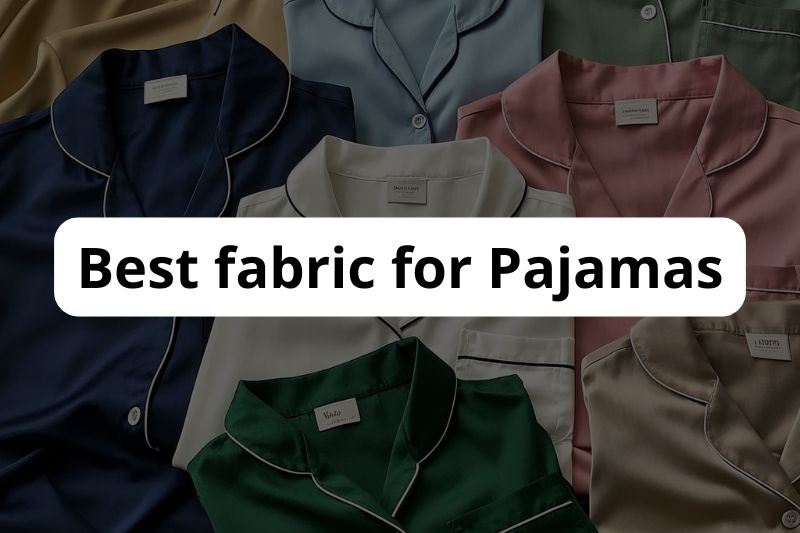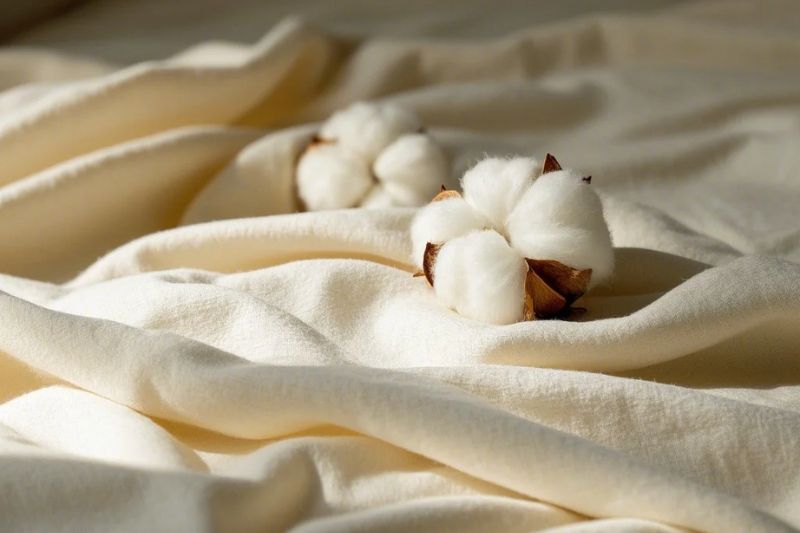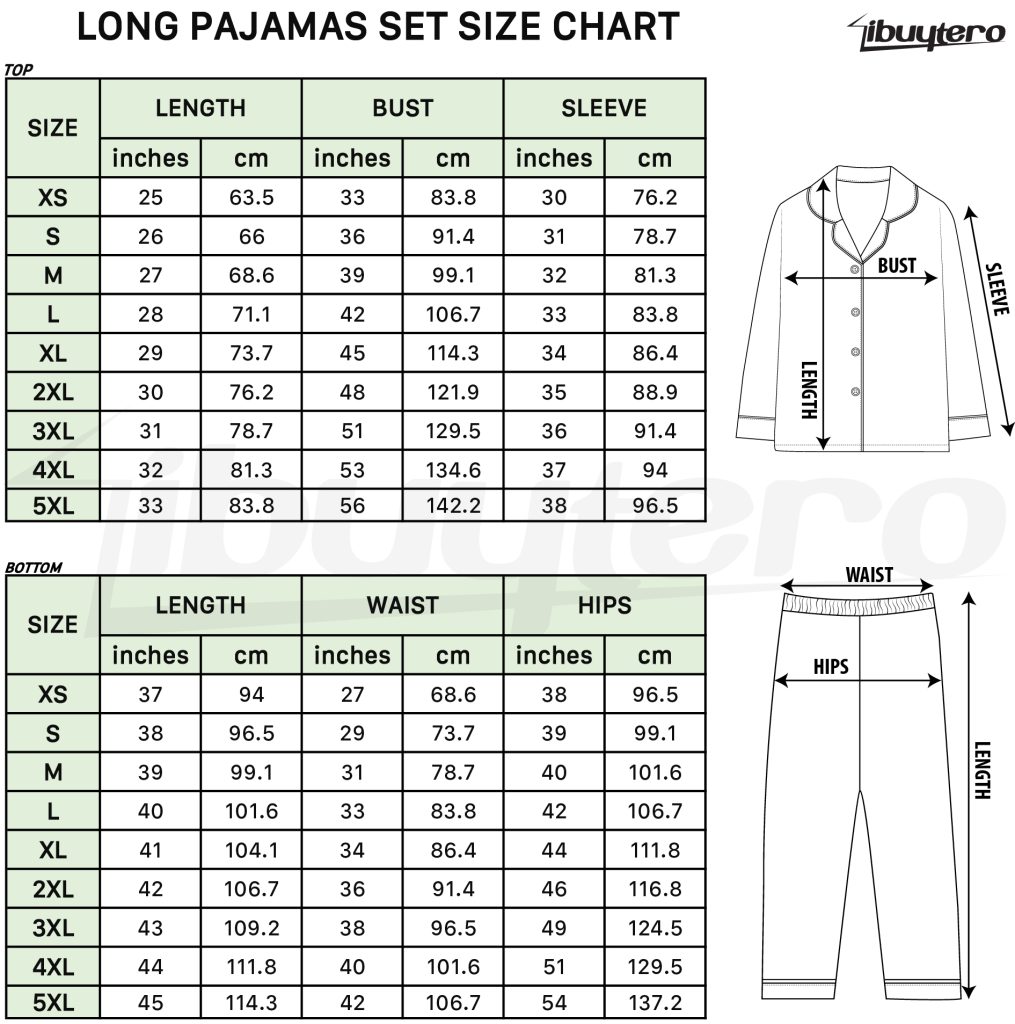Best fabric for pajamas: How to choose the perfect sleepwear material
When it’s time to wind down for the night, slipping into comfortable pajamas can transform your sleep experience. While style and fit matter, the fabric you choose is the real game-changer. The best fabric for pajamas balances comfort, breathability, durability, and personal preference, ensuring you wake up refreshed. With so many options – cotton, silk, flannel, bamboo, and more – how do you decide? In this in-depth guide, we’ll explore the top pajama fabrics, their unique benefits, and how to pick the perfect one for your sleep style.
I. Why Does Pajama Fabric Matter?
The material of your pajamas isn’t just about how it feels against your skin – it impacts temperature regulation, moisture management, and even skin and hair health. A fabric that traps heat might leave you sweaty and restless, while one that’s too thin could have you shivering in winter. Choosing the best fabric for pajamas tailored to your needs can elevate your sleep quality, making it worth the effort to understand your options. Let’s break down the contenders.

II. The Top Fabrics for Pajamas: A Detailed Look
Here’s an extensive rundown of the most popular pajama fabrics, complete with pros, cons, and ideal use cases.
1. Cotton
Cotton is a natural fiber beloved for its simplicity and versatility, often cited as the best fabric for pajamas across seasons and sleep preferences. Its breathability allows air to flow freely, keeping you cool in summer and comfortable in winter when layered.
- Pros:
- Soft and lightweight, perfect for everyday wear.
- Hypoallergenic, making it gentle on sensitive skin.
- Widely available and affordable in various weaves (like percale or sateen).
- Machine-washable and easy to care for.
- Cons:
- Prone to wrinkling, especially in lighter weaves.
- May pill or wear thin over time compared to synthetic blends.
- Best For: Hot sleepers, people with allergies, or anyone seeking a budget-friendly, reliable option.
- Varieties: Look for 100% organic cotton for a sustainable, pesticide-free choice, or opt for Pima or Egyptian cotton for extra softness and durability.
- Why It Stands Out: Cotton’s natural properties make it a staple in sleepwear, offering a balance of comfort and practicality that’s hard to beat.

2. Silk
Silk pajamas exude luxury, and for good reason. Made from the fibers of silkworm cocoons, this fabric is smooth, lightweight, and naturally temperature-regulating, earning it a spot as one of the best fabrics for pajamas for those who value indulgence.
- Pros:
- Incredibly soft and slippery, reducing friction on skin and hair.
- Naturally hypoallergenic and resistant to dust mites.
- Wicks moisture away while keeping you cool or warm as needed.
- Known to minimize hair breakage and skin irritation.
- Cons:
- High cost can be a barrier for some budgets.
- Requires delicate care – hand-washing or dry cleaning is often recommended.
- Best For: People with dry skin, frizzy hair, or a desire for a high-end sleep experience.
- Fun Fact: Silk’s amino acids can benefit skin hydration, making it a beauty sleep essential.
- Why It Stands Out: Beyond comfort, silk offers functional perks that synthetic fabrics can’t replicate, making it a worthy splurge.

3. Flannel
Flannel, typically a brushed cotton or cotton-blend fabric, is thicker and fuzzier than standard cotton, making it a top pick for the best fabric for pajamas during cold months.
- Pros:
- Exceptionally warm and cozy, trapping body heat effectively.
- Softens with each wash, enhancing comfort over time.
- Available in fun patterns like plaid or florals.
- Cons:
- Too warm for hot sleepers or humid climates.
- Can feel bulky compared to lighter options.
- Best For: Cold sleepers, winter nights, or anyone who loves a snuggly feel.
- Varieties: Lightweight flannel exists for milder climates, but traditional flannel shines in frosty weather.
- Why It Stands Out: For those who prioritize warmth above all, flannel delivers a hug-like sensation that’s hard to resist.
4. Bamboo
Bamboo-derived fabrics (like bamboo viscose or lyocell) are eco-friendly alternatives gaining traction as some of the best fabrics for pajamas. Bamboo grows quickly and requires fewer resources than cotton, adding a green appeal.
- Pros:
- Silky soft with a lightweight feel.
- Highly breathable and moisture-wicking, ideal for night sweats.
- Naturally antibacterial, reducing odor and bacteria buildup.
- Sustainable and biodegradable (depending on processing).
- Cons:
- May lack durability unless blended with other fibers.
- Processing can involve chemicals, so look for eco-certified options.
- Best For: Eco-conscious buyers, sweaty sleepers, or those who love a smooth texture.
- Why It Stands Out: Bamboo combines sustainability with performance, offering a guilt-free way to sleep in comfort.
5. Modal
Modal, a semi-synthetic fabric from beech tree pulp, bridges the gap between natural and man-made fibers. It’s increasingly popular as one of the best fabrics for pajamas for its plush feel and durability.
- Pros:
- Ultra-soft and smooth, rivaling silk at a lower cost.
- Retains shape and color even after repeated washes.
- Blends well with cotton for added breathability.
- Cons:
- Less breathable than pure natural fibers.
- Production isn’t as eco-friendly as cotton or bamboo.
- Best For: Shoppers seeking low-maintenance luxury on a budget.
- Why It Stands Out: Modal offers a silk-like experience with easier care, making it a practical yet pampering choice.
6. Linen
Linen, woven from flax plant fibers, is a crisp, airy fabric that’s making waves as one of the best fabrics for pajamas for warm weather. It’s naturally textured but softens over time.
- Pros:
- Exceptionally breathable and moisture-wicking.
- Gets softer and more comfortable with every wash.
- Durable and long-lasting with proper care.
- Cons:
- Wrinkles easily, which may bother some aesthetically.
- Can feel slightly coarse initially until broken in.
- Best For: Hot climates, summer nights, or minimalist style lovers.
- Why It Stands Out: Linen’s rustic charm and cooling properties make it a standout for those who overheat.
7. Polyester
Polyester, a synthetic fabric, is often blended with natural fibers like cotton to create affordable, durable pajamas. While not always the first choice, it can still be among the best fabrics for pajamas for specific needs.
- Pros:
- Wrinkle-resistant and highly durable.
- Affordable and widely available.
- Blends enhance softness when paired with cotton.
- Cons:
- Less breathable, potentially causing overheating.
- May feel less luxurious than natural options.
- Best For: Budget-conscious buyers or those prioritizing longevity.
- Why It Stands Out: Polyester’s practicality makes it a go-to for no-fuss sleepwear.
III. How to Choose the Best Fabric for Pajamas
With so many options, finding the best fabric for pajamas comes down to your lifestyle and sleep habits. Here’s a detailed guide to help you decide:
- Climate and Season:
- Warm Weather: Cotton, bamboo, linen, or silk keep you cool and dry.
- Cold Weather: Flannel or thicker cotton blends provide insulation.
- Skin Sensitivity:
- If you’re prone to irritation or allergies, stick to hypoallergenic fabrics like cotton, silk, or bamboo. Avoid polyester-heavy blends that might chafe.
- Sleep Temperature:
- Hot Sleepers: Prioritize breathability with cotton, bamboo, or linen.
- Cold Sleepers: Opt for flannel or silk for warmth without bulk.
- Care and Maintenance:
- Love convenience? Cotton, modal, and polyester blends are machine-washable.
- Willing to pamper your PJs? Silk and linen require gentler handling.
- Budget:
- Affordable: Cotton and polyester blends.
- Mid-Range: Bamboo and modal.
- Luxury: Silk or high-end organic cotton.
- Texture Preference:
- Crave softness? Silk, modal, or bamboo deliver.
- Like a crisp feel? Linen or percale cotton might be your match.
IV. Caring for Your Pajama Fabrics
To maximize the lifespan of your sleepwear, follow these care tips:
- Cotton: Wash in cold water, tumble dry low to prevent shrinking.
- Silk: Hand wash with mild detergent or dry clean to preserve sheen.
- Flannel: Use warm water and avoid high heat drying to maintain fluffiness.
- Bamboo: Check labels – cold wash and low dry for most blends.
- Modal: Machine washable but avoid harsh detergents.
- Linen: Cold wash, air dry to minimize wrinkles.
- Polyester: Durable enough for regular washing, but avoid overloading the dryer.
V. Comparing Fabrics: Which Is the Best for You?
Still unsure? Here’s a quick comparison:
- Most Breathable: Linen and bamboo.
- Warmest: Flannel.
- Softest: Silk and modal.
- Most Durable: Polyester blends and linen.
- Best Value: Cotton.
VI. Final Thoughts: Finding Your Perfect Pajama Fabric
The best fabric for pajamas isn’t universal – it’s personal. Cotton remains a crowd-pleaser for its all-season versatility and affordability. Silk offers unmatched luxury and skin benefits, while bamboo blends eco-friendliness with silky comfort. Flannel keeps you toasty, linen cools you down, modal balances cost and quality, and polyester delivers durability on a dime.
Think about your sleep environment, skin needs, and budget, then test a few options. The right pajamas can turn bedtime into a ritual you look forward to. Which fabric will you choose for your next pair? Sweet dreams are just a wardrobe upgrade away!
We encourage you to explore our other related articles on ibuytero to learn more about fashion and accessories. If you’re ready to add a stylish trucker hat or a vibrant Hawaiian Shirt to your collection, visit the ibuytero shop to find the perfect item that suits your style. You can also visit ibuytero shop to choose fashionable gifts with unique and interesting designs. Follow us on Pinterest to keep up to date with the latest products.









